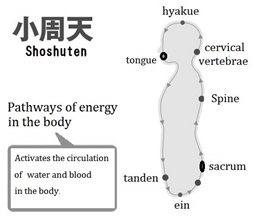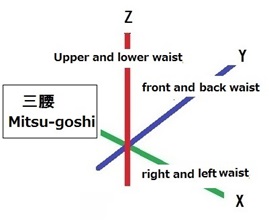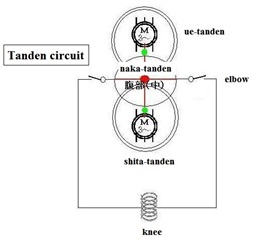|
Training in Jyuho |
|
Shoshuten is the pathway for the life energy (ch'i) that moves the muscles and works
the internal organs. It is a meridian that makes the circuit from the tailbone
and sacrum to the spinal column, and then continues over the top of the
head (hyakue or baihui) to the tongue, chest and abdomen and finally the
ein (or huiyen). |
 |
|
the secretion of saliva is increased and the body's
sympathetic-parasympathetic nervous system can be switched over, making the entire body more active. |
|
|
Henshuho’s tewaza (hand technique) |
|
Classical Physics |
|
 |
 |
|
Newtonian mechanics is a kind of kinematics mechanics
in which an object is regarded as a mass point whose total mass is concentrated at the center of gravity and has no size,
and the properties related to the motion of the mass point are guided by three rules: |
|
|
Quantum Mechanics |
 |
|
A quantum is a small piece of matter or energy that has the properties of both a particle and a wave, and is measured in nano sizes (10-9).
Atoms make up matter, and electrons, neutrons, and protons make up atoms. Quantum also includes elementary particles that include photons, neutrinos, quarks,
and muons when light is viewed as particles. In this microscopic world, the laws of physics (Newtonian mechanics and electromagnetism) do not apply,
and the mysterious laws of "quantum mechanics" are obeyed. |